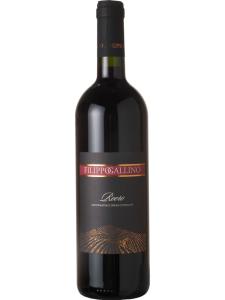Roero is a small DOCG wine district in the hills of Piedmont, north-western Italy. It is known particularly for its refreshing white wines made from Arneis, but also for its bold, fragrant reds made from Piedmont's signature red-wine grape, Nebbiolo. The area owes its name to the Roero family, powerful bankers who were extremely influential here in the Middle Ages. (© Copyright Wine-Searcher.com)
The classic Roero Arneis wine is dry and crisp, with blossom-like aromas complemented by flavors of fresh pear and apricot and a nuance of hazelnut. Alongside Gavi, it is one of Piedmont's most highly regarded white wines, and its popularity continues to grow. Arneis has not always held such prestige here, however. The variety once held a reputation as being difficult to grow (its name is actually a Piedmontese dialectal term which translates roughly as 'little rascal'). Traditionally, Arneis vines were planted next to Nebbiolo vines largely as a form of protection; the Arneis grapes' stronger fragrance distracted hungry birds and insects away from the more highly prized Nebbiolo.
The typical red Roero Rosso wine is characterized by spice-tinged aromas of black forest fruits and succulent, sour cherries. Medium-bodied and relatively high in tannins, it is less muscularly structured (and less age-worthy) than the wines of nearby Barolo and Barbaresco.
The official Roero viticultural zone is located on the north bank of the Tanaro, just opposite the town of Alba. It follows the river's path for about 15 miles (25km), between the town of Bra and the village of Govone, which marks the eastern edge of the Cuneo province. Beyond this lies the Asti province, and the various d'Asti wine appellations (see Asti).
The rolling, hilly, vineyard-lined landscape here seems typically 'Piedmont' at first glance, but there are subtle and important differences. The tightly undulating, dome-like hills here are visibly (and geologically) distinct from the more ridge-like hills of the Langhe district just to the south. Roero's distinctive landscape was formed by the cattura del Tanaro (the Tanaro 'stream capture'), the geomorphic process by which the Tanaro River changed its route about 100,000 years ago. Prior to this event, the Tanaro flowed into the Po just south of Turin – about 50 miles east of the present-day confluence.
Several million years before the Tanaro changed its course, this whole area formed part of an ancient sea known as the Golfo Padano. It is hardly surprisingly, then, that limestone and sand play significant roles in the Roero terroir. Having been broken down and shuffled about by many millennia of tectonic activity, the layers of clay, limestone and sand alternate slightly chaotically, creating a patchwork of aspects and soil types.
Roero's Arneis-based white wines are best when made from the area's cooler, north-facing slopes. In these sites, the grapes are sheltered from harsh afternoon sunshine, allowing them to ripen more steadily and to develop full aromatic complexity without losing their refreshing acidity. A dash of Arneis was traditionally added to Nebbiolo wines to 'lift' them and soften their harsh tannins. It was this tradition that led the variety to be known as Nebbiolo Blanco ('white Nebbiolo'), even though the two varieties are not directly related.
The finest Nebbiolo wines made here come from steep, sandy, south-facing slopes, as the variety requires high levels of warmth and sunlight to ripen its abundant tannins. The sandy, nutrient-poor soils found in many of these sites give a lighter, more fragrant style of Nebbiolo than the heavier limestone and clay soils found across the Tanaro in Barolo and Barbaresco. The Roero DOCG appellation laws state that Roero Rosso must be made from 95% Nebbiolo. They must also be aged for 20 months, of which at least six must be in oak barrels. A further 12 months is added to this minimum if the winemaker is seeking riserva status for the wine.
Interestingly, the Nebbiolo d'Alba viticultural area also covers Roero, before stretching across the Tanaro to include land to the south of Alba. As a result, Roero's Nebbiolo producers can choose between two appellation titles (Roero and Nebbiolo d'Alba) for their Nebbiolo-based wines. Other wines produced within the district include fruity, tangy Barbera d'Alba, soft, rounded Dolcetto di Diano d'Alba and sweet, sparkling Moscato d'Asti.


